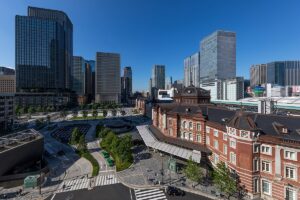Overview (history, characteristics, attractions)
Kushiro Marsh is one of Japan's largest wetlands, located in eastern Hokkaido, and is centered around Kushiro City. The vast marshland was formed by post-glacial topographical changes and years of vegetation accumulation, creating a unique landscape with large and small meandering rivers. A rare ecosystem has been preserved here, and it is home to a variety of migratory birds, wetland plants, and insects, including the Japanese crane. Since the 1980s, conservation efforts have been underway, including registration under the Ramsar Convention and designation as a national park (Kushiro Marsh National Park), making it a popular tourist destination for nature observation, photography, river rafting, and other activities.
Highlights
- View from the observation deck: You can enjoy a panoramic view of the marshland from Hosooka Observatory and Kushiro City Marsh Observatory. The appearance of the marshland changes dramatically depending on the light in the early morning or evening.
- Meandering Kushiro RiverThe river meandering through the marshland makes for a great photo opportunity, and the bird's-eye view from Hosooka Observatory is particularly famous.
- Crane observation: In winter, you have a better chance of seeing red-crowned cranes when you observe them feeding (under protective scrutiny) around Tsurui Village and other areas. The basic rule is to observe quietly.
- Boat and canoe experience: You can experience a leisurely journey through the marshland on a Kushiro River boat tour. The marshland seen from the water has a different charm than when viewed from land.
- Seasonal Nature: The landscape changes with the seasons, with flowers and insects in spring and summer, fresh greenery in summer, autumn leaves and migratory birds in autumn, and snowy scenery and red-crowned cranes in winter.
Access (nearest station, transportation, etc.)
- Nearest baseJR Kushiro Station is the main entrance, and you can access the various observation spots in the marshland from within Kushiro city.
- Train + walking/taxi: You can get to the observation deck from any station on the Senmo Main Line (such as Toro Station or a station near Kushiro Marsh) and then walk or take a taxi from the station. Please note that there are few trains on this line, so you will need to check the timetable.
- bus: Local buses operate to Kushiro city, Tsurui Village, and Toro. During the tourist season, there are also tourist shuttles and tour buses, but as there are not many of them, it is recommended to check in advance.
- car: Approximately 30-60 minutes by car from Kushiro Station (depending on the observation deck you're going to). Many observation decks and tourist sites have parking lots, so you can move around freely.
- Tour use: You can efficiently visit the sights by taking a marsh boat tour or sightseeing bus tour departing from Kushiro.
Estimated stay (estimated time required)
- Just looking at the view from the observation deck: 30 minutes to 1 hour
- Visit multiple observation decks and enjoy photography: Half a day (3-4 hours)
- Including Kushiro River boat ride and canoeing experience: Half day to full day
- For bird watching and leisurely sightseeing, including winter red-crowned crane viewing: 1 day or overnight stay (early morning and evening times are important)
Nearby spots
- Tsurui Village (Tsurumidai, etc.): A famous spot for observing red-crowned cranes. There is a visitor center and observation facilities.
- Lake Akan (Akan National Park): Hot springs, Ainu culture, sightseeing boats, etc. A tourist area accessible by car from the marsh.
- Kushiro city (Nusamai Bridge, Fisherman's Wharf MOO): Enjoy gourmet seafood and robatayaki, or stroll around the port town.
- Toro and Onnenai (trolley and walking trails): A base for exploring the marshland and observing nature.
Things to be aware of (crowds, manners, seasonal precautions, etc.)
- Conservation and MannersWetlands are delicate ecosystems. Please follow basic rules such as staying in restricted areas and on walking trails, taking your trash with you, and not touching the plants or animals.
- Impact on wildlife: Red-crowned cranes and other wild birds are sensitive to stress. Avoid flash photography or approaching them in a loud voice, and observe them from a distance. Feeding them is strictly prohibited (exceptions are made in areas permitted by conservation activities).
- Lack of traffic and frequency of trains: Public transportation has limited service in some areas. Please check the timetable in advance and plan your trip with plenty of time.
- Seasonal precautions
- Summer: There are areas with a lot of mosquitoes and blackflies. Please wear long sleeves, long pants, and bring insect repellent.
- Autumn: It gets cold in the mornings and evenings. Make sure to dress warmly.
- Winter: Expect severe cold and frozen roads. Be sure to bring studless tires, take precautions against the cold, and check for road closures due to weather.
- Safety measures: The observation deck and promenade are uneven and have slippery sections. Please wear comfortable walking shoes and avoid strenuous activities in bad weather.
- Drone regulations: Drone flying may be restricted due to environmental conservation or safety reasons. Please check the regulations and permission beforehand.
The Kushiro Wetlands are a vast natural treasure trove that changes its appearance with each season. Please enjoy the quiet and beautiful world of the wetlands by being well prepared and observing proper etiquette.



